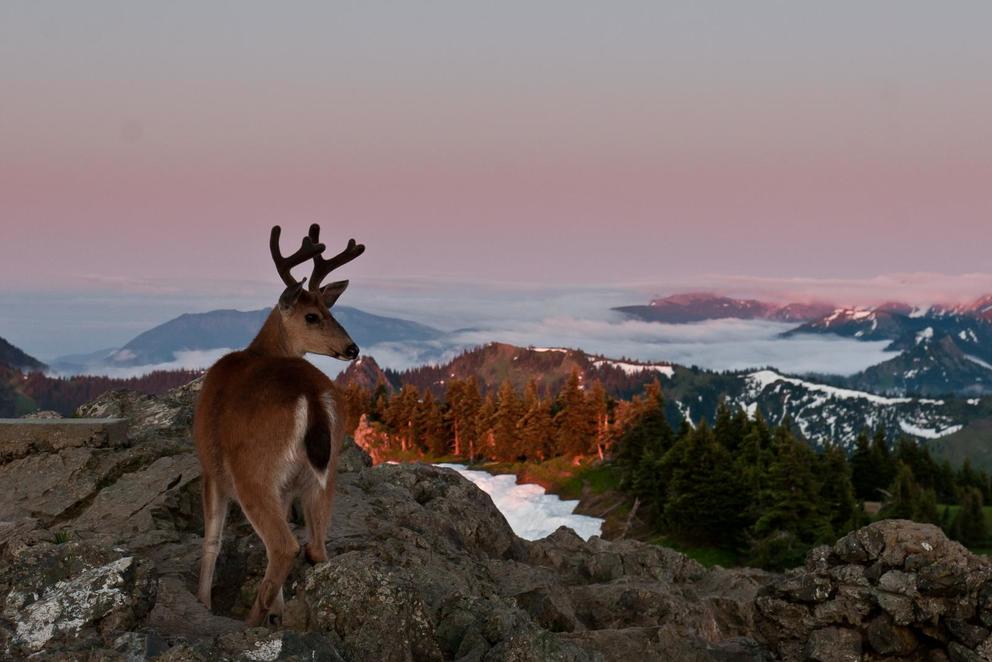Last month, Interior Secretary Ryan Zinke submitted a report to President Trump recommending reducing the size of six national monuments, including Utah’s Bears Ears. He cited President Woodrow Wilson’s 1915 order to shrink Mt. Olympus National Monument as a legal precedent for doing so.
Legal scholars question whether a president can shrink the size of a national monument without an act of Congress. Legal arguments aside, the president would be well advised to consider what happened in the Olympics before he messes with any national monument. History shows that when the American public believes a landscape is worth saving, it often ends up as a national park.
Two days before he left office in 1909, President Theodore Roosevelt used his authority under the Antiquities Act to create Mt. Olympus National Monument. The designation protected the Olympic Peninsula’s endemic elk, which had been decimated by overhunting and habitat loss from logging.
Roosevelt’s designation forestalled logging within the monument boundaries and protected hundreds of acres of dense forests the elk needed to survive.
Predictably, the state’s timber and mining industries revolted. They demanded President Woodrow Wilson shrink the monument, arguing access to timber and minerals was needed for the nation’s efforts in World War I. In 1915, Wilson complied, reducing Mt. Olympus National Monument by more than half, to 300,000 acres. In 1929, President Calvin Coolidge shrank the monument boundaries even further, this time to make way for the now-removed Elwha Dam.
As part of a massive federal government reorganization during the Great Depression, President Franklin Delano Roosevelt in 1933 transferred all national monuments to the National Park Service, including Mt. Olympus. Within a year, the National Park Service judged the Olympics to be of national significance. Conservation organizations, including the Seattle-based Mountaineers, called for the creation of a national park.
President Roosevelt toured the Olympic Peninsula in September 1937. Impressed by the area’s stunning natural beauty, repulsed by the ravages of intense logging and moved by the earnestness of local schoolchildren holding pro-park signs, he promised a large national park.
Roosevelt and then President Harry S. Truman completed the park in 1952. Today, Olympic National Park comprises 922,651 acres, an area three times larger than the shrunken national monument. Visitors to the Olympic Peninsula — the park welcomed 3.4 million in 2016 — enjoy more than 1.5 million acres of federally protected public land.
Mt. Olympus National Monument and Bears Ears National Monument have a lot in common. Both were created by presidents in the last days of their administrations. Both were attacked for “locking up” resources valued by industry. Both prompted calls to shrink their boundaries. And both galvanized a passionate public to preserve them for the benefit of all Americans.
President Trump should view the reduction of Mt. Olympus National Monument not as legal precedent but as a cautionary tale. Polls show overwhelming support for leaving the monuments as they are. When public opinion favoring preservation is ignored, public demand for preservation increases.
Of the few national monuments that former presidents have reduced by executive order, many are now beloved national parks, including Grand Canyon, Arches, Black Canyon of the Gunnison and Petrified Forest. As demand for public lands increases for both recreation and conservation, President Trump should expect that any action he takes will be met by a stronger reaction.
If the president tries to shrink Bears Ears and other national monuments, he should expect aggressive legal challenges from outdoor recreation and sportsmen’s groups, environmental organizations, tribes and others. He and members of Congress should also expect that the public will press for stronger protection — which in most cases means establishing a national park.
“Bears Ears National Park” has a nice ring to it.



